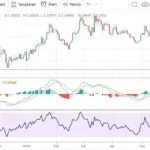Market volatility is an inevitable part of investing. Whether driven by economic uncertainty, geopolitical tensions, or sudden policy shifts, market swings can quickly erode portfolio value if not managed carefully. Hedging is a strategy investors use to protect their portfolios from downside risk—acting as a form of “insurance” during unpredictable times. Here’s how you can effectively hedge your portfolio in volatile markets.
1. Understand What Hedging Means
Hedging involves using financial instruments or strategies to offset potential losses in one part of your portfolio by taking an opposite position elsewhere. The goal isn’t necessarily to make a profit but to minimize losses when markets move against you. Think of it as balancing your risk exposure—if one asset falls, another rises or remains stable.
2. Diversify Across Asset Classes
Diversification remains the most basic yet powerful form of hedging. A well-diversified portfolio spreads investments across different asset classes such as equities, bonds, real estate, and commodities.
- Stocks and Bonds: When stock markets decline, bond prices often rise as investors seek safer assets.
- Commodities and Gold: Precious metals like gold and silver tend to perform well during periods of uncertainty, serving as a safe-haven hedge.
- Geographic Diversification: Holding assets across different countries reduces exposure to local market shocks.
3. Use Defensive Stocks and Sectors
Defensive stocks—such as utilities, healthcare, and consumer staples—tend to perform relatively well during downturns because their demand remains steady. Allocating part of your portfolio to these sectors can cushion losses when cyclical or high-growth sectors experience volatility.
4. Consider Derivatives for Protection
For experienced investors, derivatives such as options and futures can serve as powerful hedging tools.
- Put Options: Buying a put option gives you the right to sell a stock at a predetermined price, protecting against potential declines.
- Futures Contracts: These can lock in prices for commodities or currencies, shielding you from adverse price movements.
However, derivatives require careful management and understanding, as improper use can amplify losses instead of reducing them.
5. Allocate to Alternative Assets
Alternative investments—like hedge funds, private equity, or real assets—often have low correlation with traditional markets. They can provide stability and reduce portfolio volatility. For example, infrastructure funds or real estate investment trusts (REITs) may continue to generate income even when equity markets fall.
6. Increase Cash or Short-Term Instruments
In times of high uncertainty, holding a portion of your portfolio in cash or short-term government securities can be a smart defensive move. This not only protects capital but also provides liquidity to take advantage of opportunities when markets stabilize.
7. Use Inverse ETFs and Volatility Funds (With Caution)
Inverse ETFs are designed to move opposite to market indices, providing short-term hedging benefits. Similarly, volatility ETFs, which track indices like the VIX, can rise when market volatility spikes. These instruments, however, are best suited for short-term strategies due to their compounding effects and tracking errors over longer periods.
8. Rebalance Regularly
Even the best hedge can lose effectiveness over time. Regularly rebalancing your portfolio ensures that your asset allocation aligns with your risk tolerance and market conditions. This disciplined approach helps lock in gains from outperforming assets and reinforces your protection strategy.
9. Stay Informed and Adaptive
Volatility can arise suddenly, making it essential to stay informed about macroeconomic developments, interest rate changes, and global events. Adapting your hedging strategy to current market dynamics can make the difference between preserving capital and suffering unnecessary losses.
Conclusion
Hedging your portfolio is not about eliminating risk altogether—it’s about managing it intelligently. By diversifying your holdings, incorporating defensive assets, and selectively using financial instruments, you can safeguard your investments from market turbulence. A thoughtful hedge strategy provides peace of mind, allowing you to stay invested and focused on your long-term financial goals even when markets become unpredictable.













